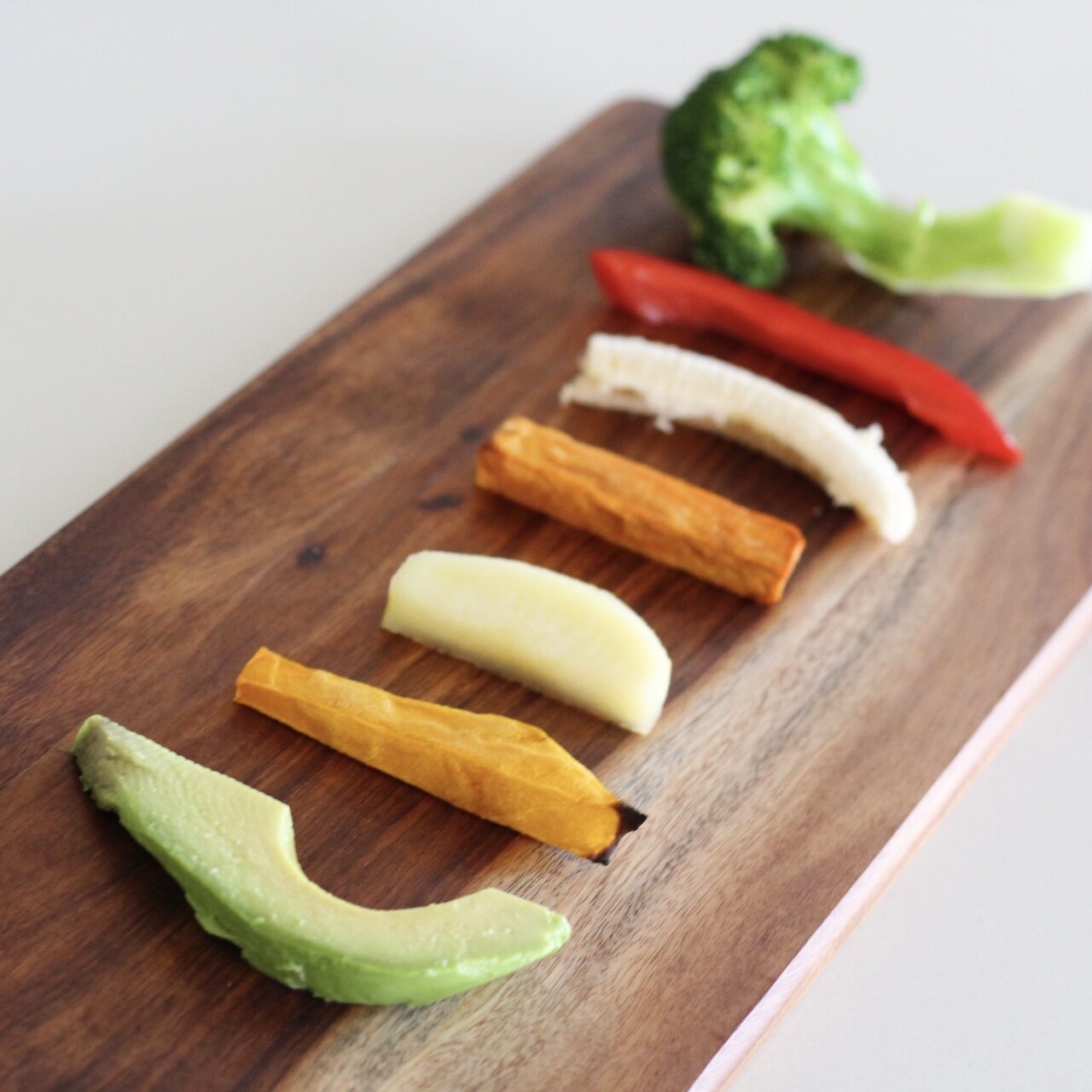Confused about starting solids? You’re not alone. With so much conflicting advice on when to start, what foods to offer and in what order plus trying to decide between doing baby led weaning or traditional purees, its enough to send even the most seasoned parent into a head spin.
If you’re onto your second or subsequent baby, or you’re at least out of that newborn bubble, you’ll have realised that every baby is oh so different and develops at very different speeds. Even between siblings, one baby reaches certain milestones before another and that goes for starting solids too. Its important that you tune into your own baby, not worry about what the other babies in your mother’s group are doing and follow your baby’s cues and your own intuition. That being said, some of us need a little more direction with tackling this exciting, yet sometimes overwhelming stage. If that’s you, then I’ve written this post to highlight what the guidelines says, what the evidence suggests and to (hopefully) point you in the right direction with a little more confidence.
So what are the current guidelines on when to start offering solid foods?
The NH&MRC Infant Feeding Guidelines (2012) recommend that solid foods are introduced around 6 months of age in order to meet your baby’s increasing nutritional and developmental needs. It is around 6 months of age that stores of iron and zinc are declining, that appetite is increasing, the extrusion reflex is disappearing, their digestive system has matured to be able to digest starches and the baby is now increasingly aware of their environment and is curious of new textures and flavours.
So what foods do you offer first?
If you ask your own mum or grandmother what your baby’s first foods should be you might hear the many restrictions that were once considered normal practice. Luckily though, these days parents have greater freedom in what foods are considered acceptable first foods and there are less rules on how to introduce foods to our bubs. The only “rule” so to speak is that as long as foods rich in iron are included in those first foods, foods can be introduced in any order and at a rate that suits the baby.
So what exactly does that mean, I hear you asking?!
Breastmilk, and or formula should still be the baby’s main nutritional source. However, once you decide that your baby is ready for solids those first few tastes could include single fruit or vegetable purees. Babies are use to thin, sweet tasting breastmilk or formula so starting with smooth purees of pumpkin, sweet potato or pear might be a good place to start. Only offering fruit or sweetening vegetables or other purees with fruit is not recommended. Other first tastes could include:
- avocado
- cooked apple
- carrot
- zucchini
- broccoli
Once first tastes have been established and your baby is tolerating small amounts of pureed foods you can start to get creative with different flavour combinations that contain iron rich foods such as meats, fish, poultry, legumes or tofu and gradually start to add varying textures. If you’re reading this and thinking ‘but I want to do baby led weaning’ then you can read about that here.
It is important that textures increase and are varied to ensure correct oral muscular development. Purees should progress from smooth to mashed foods, then to minced and finally chopped foods. Your baby will learn quickly how to navigate and manage mashed and minced foods and it is essential the introduction of these textures aren’t delayed until after 10 months of age to prevent feeding difficulties later on.
Regardless of which feeding method you start with, either traditional purees or baby-led weaning, by around 8 months most babies can manage soft finger foods in long finger shaped strips to allow the baby to grab onto them and start to self feed. Some babies can tolerate finger foods from 6-7 months of age so be guided by your baby and do what feels right. Allowing your baby to feed themselves helps with growing independence and helps to develop fine motor skills. Finger foods can start to become smaller pieces by around 9 months of age when the baby is developing their pincer grip.
By 12 months of age, your baby should be tolerating family foods offered in age appropriate forms such as small, chopped up pieces.
The only other advice for foods that should be included in the first 12 months of your baby’s life include offering your baby foods that are high allergen risk foods such as eggs, nuts (nut butters to avoid choking), shellfish, wheat, dairy and soy. Evidence suggests that by delaying introducing these foods, you might increase the risk of your child developing a food allergy. The evidence also points towards regular consumption of high allergen risk foods once introduced to increase protection against food allergies.
What not to feed your baby?
There’s a few foods that aren’t suitable for babies under 1y which include:
- honey due to the risk of botulism
- whole nuts or other hard, small foods due to the risk of choking. Nuts in the form of nut butters should be included
- animal or plant based milks as a main drink are not suitable due to the protein and electrolyte concentrations. A small amount of these milks for use in cooking is suitable
- fruit juice or drink offer no nutritional benefit
- caffeinated or sugar sweetened drinks can lead to iron deficiency or dental caries
Are you ready to learn all you need to know to get your baby started on solids and setting them up for a lifetime of positive eating behaviours? If so - join hundreds of parents, just like you, who have enrolled in my online Introducing Solids course . This is a self-paced, 100% online course you can start anytime, as soon as you and your baby are ready!





